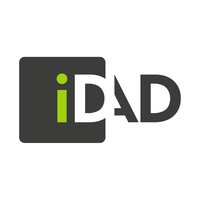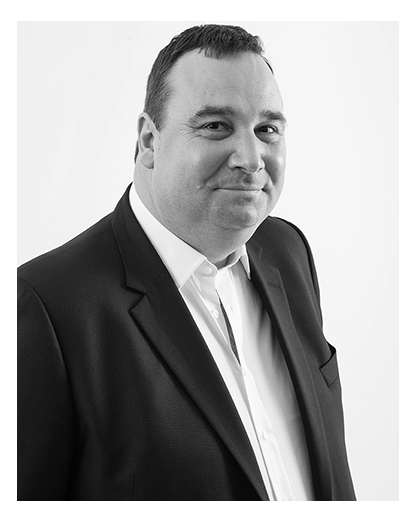UK and offshore structured products specialist provider Idad has refined its fund of structured products and has launched an active managed certificate to capitalise on opportunities in the retirement market.
In the second part of an interview, Clive Moore (pictured below), Idad chief executive, talks about the firm’s products catalogue, new opportunities around wrappers and underlyings, as well as the risk of adding complexity to products without delivering added value to end investors.
One of the challenges we see with structured products is that you miss that excess growth
The firm has a Ucits UK structured products fund in the pipeline which is going through UK FCA regulatory approval and is expected to launch in January/February.
“This will be a good addition to our range of Isle of Man funds which have been running for the last six years or so,” says Moore. “These funds are relatively small, but we have refined the process and they have been able to outperform other funds of structured products available in the market.”
As every other product out there, the firm’s structured fund went down when the market crashed in March -April but it held up well because it had positions on these exponential growth sectors which carried on growing.
“The fund provides tactical defined growth without losing the funding pick up the issuers,” says Moore, adding that the fund manager “really knows the sector and uses a tactical allocation with an active management overlay”.
“It’s working very well because it cushions the falls and also provide investors with exposure to growth sectors where structured products can deliver."
Idad has left behind the traditional fund of autocalls that are collateralised and full of defensive structures, and is now in the second generation of structured funds.
The firm’s fund is 50%-60% based on the traditional approach with the usual FTSE100/Eurotoxx50-linked defensive autocalls, but it picks up funding from 20 to 25 counterparties to have a well-diversified upside. The novelty comes from the remaining allocation of the underlying portfolio, 20% of which is allocated to more tactical and thematic structured products linked to banks, sectorial, and baskets of stocks. The remaining 20% is a portion looking at sectors where the growth is not capped - AI, cybersecurity, exports, as well as delta one/ETF structures.
“One of the challenges we see with structured products is that you miss that excess growth – you can get fantastic growth in some of these sectors which you always cap with structured products so combining then with delta one products you can capture more of that growth,” says Moore.
There is an increasing focus on actively managed certificates (AMCs) in some European markets. What is your take on these? Do you think this kind of structure can add value to investors’ portfolios and sit alongside more traditional structures such as notes and funds of structured products?
Clive Moore: There is huge amount of money post-retirement, but the choices are quite limited and difficult – annuities give you a four percent rate per year and you lose flexibility. We have a post-retirement AMC with a fixed targeted income – it offers a series of issuances with a 10-year time horizon. These are 10-year investment propositions with a six to seven percent fixed coupon which in a way are the result of CPPI strategies being refined – the investor takes some risk (usually 80% protected) but gets a fixed coupon every year. We have done a lot of work and analysis on it to make sure that not only the back-testing looks good but that the coupons are attractive and can be adjusted to 9-10% a year if interest rates go up.
Based on this work, we have decided to launch a public offering AMC in the UK which will be tight on the charges - we think it will be an interesting addition to the market. Advisors continue to favour platforms to buy their products and AMCs can sit in those platforms so it will be visible to many advisors looking for alternatives for their clients.
There is very little choice in the post-retirement market and no specific products designed for these investors – it’s a huge market with a real need. Structured products continue to provide efficient ways to address the needs of different types of investors.
Indexed annuities are also a growing segment for the structured products industry in the US. Why are these products not getting the same traction in Europe?
Clive Moore: This is one of the areas where structured products are not always as good as they could be – a lot of these products are designed from the perspective of the issuer and it is very difficult for the distributor because there is a disconnect between the understanding of the end client and the understanding of the product.
We have taken the view that our goal is to serve the end investor not the product manufacturer. We have worked very hard to understand the market and then apply that knowledge and our expertise on how products are put together to design our products.
Structured products can offer good value but as soon as you start adding complexity it is very easy to find flaws
This is an area where product providers have failed to influence what gets to the market. When you look at some of these products in the US and other markets, you can see they have been designed by product manufacturers and they don’t always match the market need very well.
Decrement and risk control indices are also being sold as a panacea to deliver returns. Do these indices provide real value or are they just another gimmick from the industry to improve the optics of products?
Clive Moore: I have argued in the past against this kind of index because it is a solution for the wrong problem. It is not about the products being wrong or not making sense but these products are being increasingly used in markets where there is very tight distribution and the focus is on the headline rate - the coupon - and on pushing products to the market.
As soon as you go into areas where there is some kind of independent distribution and real interaction with the client, there is not much interest in over-engineered underlyings. Investors prefer cleaner structures that can be understood, and they can relate to even if they have a lower coupon.
We’re not saying that these products are bad or will not deliver value, but the level of understanding and expectation can differ, and we have seen how easy it is to mis-sell a product. Some of the solutions being developed may have very good intentions ie make the product more attractive and the optics better, but sometimes they don’t take into account if this is in the best interest for the end investor.
The industry learnt the lessons around payoff complexity and claimed that innovation was now focused on the underlying component of products. Is there a risk to repeat the same mistakes of the past by adding complexity to new underlyings brought to the market?
Clive Moore: It’s a tough market out there. It probably is a good thing that margins and profitability are tight – there’s no big payout or marketing spend. The reputational risk is there, and the sector as a whole has to make sure it helps itself and does not make the same mistakes it did in the past.
If they are precise and accurate, structured products can offer good value but as soon as you start adding complexity it is very easy to find flaws. The target market is something investment banks need to take into account – of course you don’t need to know how everything works in a product but when you sit in front of a 70-year old investor, complex underlyings are not understood.
We think that is a challenge that remains. There are investors with the risk appetite to invest in decrement and risk control indices – it is important that the right products end up in the hands of the right investors.
If you look at the UK market it’s a boring market because it is very centered on the FTSE 100 and the regulator has left very little room for product innovation – the six product providers are all doing the same defensive autocalls, but the offshore space allows you to offer other products although you have to work harder on the product design to be able to deliver.
We have done hundreds of multi-asset products, worst ofs, to maintain the coupon and generate the commission and that approach works for us and for our clients – it doesn’t really matter where the correlation is because if markets drop it goes to one anyways. We have also introduced memory coupons in some structures - that’s the kind of thing you can do with offshore clients.

